This article was co-authored by Mark Co, DPM. Dr. Mark Co is a Podiatrist who runs his own private practice in San Francisco, California. Dr. Co specializes in treatments for bunions, ingrown toenails, toenail fungus, warts, plantar fasciitis and other causes of foot pain. He also offers custom orthotics for the treatment and prevention of foot and ankle issues. Dr. Co completed a Master of Business Administration (MBA) at New York University and an MA in Electrical Engineering and Computer Science at Johns Hopkins University. Dr. Co also completed his DPM at the California School of Podiatric Medicine and a residency and internship at the Kaiser Permanente Medical Center, Santa Clara, California. Dr. Co was awarded San Francisco's "Top 3 Podiatrists" in 2018, 2019, and 2020. Dr. Co is also a member of the CPMA (American Podiatric Medical Association).
There are 17 references cited in this article, which can be found at the bottom of the page.
This article has been viewed 119,098 times.
Foot fungus is a general term for the many different fungal infections you could catch on your feet or toenails. The most well-known type is athlete’s foot. These infections are very common, so don’t be alarmed if you notice some redness, crusty or cracked skin, or itching on your foot. Some over-the-counter antifungal cream is usually all you’ll need to clear the rash up. You could also try home remedies, although these are usually not as effective as conventional treatments. If home care doesn’t work for you, then visit a podiatrist for prescription medication that should kill all the fungus and treat the rash.
Steps
Effective Medical Treatments
If you notice a rash on your foot, first see if some OTC antifungal cream helps. If not, then visit a podiatrist for further options. In either case, fungal infections can be persistent, so you’ll have to continue treatment for 2-4 weeks at least to make sure the rash is completely gone. Be patient and stick with the treatment until the rash heals.
-
1Apply an over-the-counter antifungal cream 1-2 times daily. The most effective at-home treatment for foot fungus is an over-the-counter antifungal cream. Go to the pharmacy and look for creams containing miconazole, clotrimazole, terbinafine, or tolnaftate, which are usually the most effective. Rub the cream on the rash and surrounding skin 1-2 times per day, according to the product instructions.[1]
- It’s best to apply the cream right after washing your feet so it can stay on for as long as possible.
- You could also use antifungal sprays or powders, but they usually don’t cover the rash as well as creams and ointments.[2]
-
2Trim your nails before applying the cream for nail fungus. Regular OTC antifungal cream can also work for nail fungus, but it's more difficult for the cream to reach underneath your nails. If you have nail fungus, trimming your nails can help relieve pain and help the cream reach the rash better. Wet your nails to soften them and trim them back with a nail clipper. Then apply the cream normally.[3]
- Creams and sprays are overall less effective for nail fungus because the cream can’t reach underneath the nail. You’ll probably need oral medication for nail infections.
- Cover the skin around your nail as well so the rash doesn’t spread further.
- Clean the nail clipper when you’re done and don’t share it with anyone else. This could spread the rash.
Advertisement -
3Continue applying the cream for 2 weeks after the rash disappears. OTC creams usually clear the rash within 1-2 weeks, but don’t stop applying the cream when the rash improves. Continue applying the cream daily to make sure all the fungus is dead. If not, the rash could come back.[4]
- Confirm these directions on the product box. Don’t continue applying the cream if the product says not to.
-
4Visit a podiatrist for prescription cream if the rash doesn’t go away. If you’ve been using OTC treatments for 2 weeks and the rash hasn’t improved, then don't worry. You probably just need a stronger medication. Make an appointment with a podiatrist for an exam. They will probably prescribe a prescription-strength cream. Apply the cream exactly as the doctor tells you to so the rash clears up.[5]
- The instructions for prescription-strength creams are usually very similar to OTC ones. You’ll probably have to apply it to the rash and surrounding area 1-2 times per day for 1-2 weeks.
-
5Take oral antifungal medication if the rash doesn’t respond to cream. If the fungus doesn’t respond to topical treatments, or if it’s under your nail, you might need an oral medication instead of cream. You usually have to take these medications for 6-12 weeks to make sure the infection is all cleared. Follow your doctor’s instructions for taking the medication correctly.[6]
- Some oral antifungal medications are terbinafine (Lamisil) and itraconazole (Sporanox). The type that your doctor prescribes depends on the type of infection you have.
- Oral antifungals could cause liver problems, so your doctor may order periodic blood tests to make sure the levels in your system are correct. They may not recommend oral medication if you have any type of liver disease or damage.
Unverified Home Remedies
There are many home remedies for foot fungus floating around the internet, but most of them don’t have much science to prove that they’re effective. The following remedies do show some success in treating foot fungus. However, these are generally not as effective as medical treatments. If you’ve been treating your rash with home treatments for a week and don’t see any improvement, then switch to an OTC antifungal cream instead.
-
1Rub 50% tea tree oil cream onto the rash. Tea tree oil is an essential oil with antibacterial and antifungal properties. It shows some success in treating athlete’s foot. Get a cream containing a 50% concentration of tea tree oil and rub it onto your rash twice a day. Continue this treatment for 2-4 weeks until the rash clears up.[7]
- If you get undiluted tea tree oil, dilute to a 50% concentration. Use a carrier oil like jojoba or olive. Then mix 1/2 tsp (2.5 ml) of carrier oil with 1/2 tsp (2.5 ml) of the tree oil for a 50% mixture.[8]
- Weaker concentrations of tea tree oil might help reduce the rash, but generally won’t kill the fungus completely.[9]
-
2Try ajoene extract to kill the fungus. Ajoene is a compound in garlic that small studies show can kill the athlete’s foot fungus. Get a 1% concentration of ajoene oil or gel. Rub this onto the rash twice a day for 1-2 weeks to see if this works for you.[10]
- You might also be able to use raw garlic as an antifungal treatment.[11] However, it’s uncertain if raw garlic works specifically against foot fungus.
-
3Soak your feet in vinegar to kill bacteria and odor. This is another popular home remedy for athlete’s foot. It hasn’t been widely studied, but some people find it helpful.[12] Mix 2 parts of warm water with 1 part of white or apple cider vinegar. Then soak your feet for 15-20 minutes. This might kill the fungus causing your rash.[13]
- Only do a vinegar soak once a week to avoid irritating your skin. You’ll probably have to use other treatments during the rest of the week.
- Vinegar is acidic and might cause some burning or irritation if you have cuts on your feet.
Preventing the Fungus from Spreading
Foot fungus, especially athlete’s foot, can be very contagious. Whether you’re using OTC or prescription treatments, you still have to take steps to prevent the fungus from spreading until the rash clears completely. These tips can keep the fungus contained and might even help the rash heal faster.
-
1Wash your feet with soap and water twice a day. Regular washing can prevent the fungus from spreading and help the rash heal faster. Wash your feet with soap and warm water. Make sure you get in between your toes, because fungus often starts there. Then rinse all the soap off. Repeat this twice per day until the rash clears.[14]
- Remember to wash your hands after cleaning your feet. Otherwise, you could spread the infection.
- This is also an important general practice to prevent foot fungus from starting in the first place, so wash your feet every time you bathe.
-
2Dry your feet whenever they’re wet. Sweaty feet are the perfect environment for fungus to grow in. Whenever your feet get wet or sweaty, use a towel and dry them off. Remember to get in between your toes, which is where fungus usually hides.[15]
- To dry your feet further, you could rub some talcum powder onto your feet.[16]
- Only use the towel once and then wash it. Otherwise, you could spread the fungus.
-
3Change your socks and shoes every day. Fungus can live in your socks and shoes, so don’t wear the same ones every day. Change your socks twice a day, especially if your feet get sweaty. Also, try not to wear the same pair of shoes more than 1 day in a row so they dry out before you wear them again.[17]
- You could also sprinkle talcum or antifungal powder into your shoes to dry them out and kill any leftover fungus.[18]
-
4Take off your shoes when you’re at home. Keeping your shoes on provides a good environment for the fungus to grow and spread. When you get home, take your shoes off so your feet can dry and cool off.[19]
- If you take your socks off, be sure to wear a pair of sandals instead. You could spread the fungus if you walk around barefoot.
-
5Avoid touching the rash. Foot fungus is contagious and you could spread it around if you touch the rash. The rash might be annoying any itchy, but do your best to resist touching it. This prevents it from spreading and also helps the rash heal faster.[20]
- If you do accidentally touch the rash, wash your hands right away so you don’t spread it.
-
6Stay away from public pools and showers until the rash clears. These are some of the most common places that foot fungus spreads. Be considerate of other patrons and avoid these areas until your rash clears up.[21]
- If you do have to go to a place like this, don’t walk around barefoot. Always wear sandals or some other footwear so you don’t spread the fungus.
-
7Use your own towels and personal items. Sharing towels, nail clippers, shoes, and other personal items can definitely spread the rash to other people. Don’t share any personal items with others in your home to keep the rash contained.[22]
- Using your own personal items is generally a good practice, even if you don’t have athlete’s foot. It prevents people from accidentally spreading fungus or bacteria to each other.
Medical Takeaways
Foot fungus is an annoying condition, but it’s very common and treatable. In many cases, you can clear the rash yourself at home with some OTC antifungal cream. If this doesn’t work, then visit a podiatrist for some additional treatment options. In any case, with the right treatment, your foot fungus rash should clear up completely within a few weeks.
Expert Q&A
Did you know you can get expert answers for this article?
Unlock expert answers by supporting wikiHow
-
QuestionCan foot fungus spread to the eyes?
 Chris M. Matsko, MDDr. Chris M. Matsko is a retired physician based in Pittsburgh, Pennsylvania. With over 25 years of medical research experience, Dr. Matsko was awarded the Pittsburgh Cornell University Leadership Award for Excellence. He holds a BS in Nutritional Science from Cornell University and an MD from the Temple University School of Medicine in 2007. Dr. Matsko earned a Research Writing Certification from the American Medical Writers Association (AMWA) in 2016 and a Medical Writing & Editing Certification from the University of Chicago in 2017.
Chris M. Matsko, MDDr. Chris M. Matsko is a retired physician based in Pittsburgh, Pennsylvania. With over 25 years of medical research experience, Dr. Matsko was awarded the Pittsburgh Cornell University Leadership Award for Excellence. He holds a BS in Nutritional Science from Cornell University and an MD from the Temple University School of Medicine in 2007. Dr. Matsko earned a Research Writing Certification from the American Medical Writers Association (AMWA) in 2016 and a Medical Writing & Editing Certification from the University of Chicago in 2017.
Family Medicine Physician
-
QuestionHow can I tell the difference between foot fungus and toe fungus?
 Mark Co, DPMDr. Mark Co is a Podiatrist who runs his own private practice in San Francisco, California. Dr. Co specializes in treatments for bunions, ingrown toenails, toenail fungus, warts, plantar fasciitis and other causes of foot pain. He also offers custom orthotics for the treatment and prevention of foot and ankle issues. Dr. Co completed a Master of Business Administration (MBA) at New York University and an MA in Electrical Engineering and Computer Science at Johns Hopkins University. Dr. Co also completed his DPM at the California School of Podiatric Medicine and a residency and internship at the Kaiser Permanente Medical Center, Santa Clara, California. Dr. Co was awarded San Francisco's "Top 3 Podiatrists" in 2018, 2019, and 2020. Dr. Co is also a member of the CPMA (American Podiatric Medical Association).
Mark Co, DPMDr. Mark Co is a Podiatrist who runs his own private practice in San Francisco, California. Dr. Co specializes in treatments for bunions, ingrown toenails, toenail fungus, warts, plantar fasciitis and other causes of foot pain. He also offers custom orthotics for the treatment and prevention of foot and ankle issues. Dr. Co completed a Master of Business Administration (MBA) at New York University and an MA in Electrical Engineering and Computer Science at Johns Hopkins University. Dr. Co also completed his DPM at the California School of Podiatric Medicine and a residency and internship at the Kaiser Permanente Medical Center, Santa Clara, California. Dr. Co was awarded San Francisco's "Top 3 Podiatrists" in 2018, 2019, and 2020. Dr. Co is also a member of the CPMA (American Podiatric Medical Association).
Podiatrist
-
QuestionDo you have any home remedies for dealing with foot fungus?
 Neal Blitz, DPM, FACFASDr. Neal Blitz is a Podiatrist and Foot & Ankle Surgeon who runs private practices in New York City and in Beverly Hills, California. Dr. Blitz is “The Bunion King®” and is the creator of the Bunionplasty® Procedure (plastic surgery for bunions) which has revolutionized bunion surgery. He has over 17 years of podiatric experience and specializes in minimally invasive foot and ankle surgery. Dr. Blitz received his DPM from the New York College of Podiatric Medicine, then completed a residency focused on Elective & Reconstructive Foot & Ankle Surgery at the Swedish Medical Center, and was awarded an AO Trauma fellowship in Dresden, Germany, focused on trauma and reconstructive techniques. He is board certified in Foot Surgery and Reconstructive Rearfoot & Ankle Surgery and is also a Diplomate of the American Board of Foot & Ankle Surgery and a fellow of the American College of Foot & Ankle Surgeons (FACFAS).
Neal Blitz, DPM, FACFASDr. Neal Blitz is a Podiatrist and Foot & Ankle Surgeon who runs private practices in New York City and in Beverly Hills, California. Dr. Blitz is “The Bunion King®” and is the creator of the Bunionplasty® Procedure (plastic surgery for bunions) which has revolutionized bunion surgery. He has over 17 years of podiatric experience and specializes in minimally invasive foot and ankle surgery. Dr. Blitz received his DPM from the New York College of Podiatric Medicine, then completed a residency focused on Elective & Reconstructive Foot & Ankle Surgery at the Swedish Medical Center, and was awarded an AO Trauma fellowship in Dresden, Germany, focused on trauma and reconstructive techniques. He is board certified in Foot Surgery and Reconstructive Rearfoot & Ankle Surgery and is also a Diplomate of the American Board of Foot & Ankle Surgery and a fellow of the American College of Foot & Ankle Surgeons (FACFAS).
Board Certified Podiatrist
Warnings
- There are other home remedies for foot fungus floating around the internet, including using mouthwash or VapoRub. While these might not be harmful, there's no evidence that they work. Stick with verified treatments instead.[24]⧼thumbs_response⧽
References
- ↑ https://medlineplus.gov/ency/article/000875.htm
- ↑ https://health.clevelandclinic.org/how-you-can-stop-foot-and-toe-fungus-in-its-tracks/
- ↑ https://www.mayoclinic.org/diseases-conditions/nail-fungus/diagnosis-treatment/drc-20353300
- ↑ https://medlineplus.gov/ency/article/000875.htm
- ↑ https://www.mayoclinic.org/diseases-conditions/athletes-foot/diagnosis-treatment/drc-20353847
- ↑ https://www.mayoclinic.org/diseases-conditions/nail-fungus/diagnosis-treatment/drc-20353300
- ↑ https://pubmed.ncbi.nlm.nih.gov/12121393/
- ↑ https://www.takingcharge.csh.umn.edu/how-do-i-choose-and-use-essential-oils
- ↑ https://pubmed.ncbi.nlm.nih.gov/1303075/
- ↑ https://pubmed.ncbi.nlm.nih.gov/11050588/
- ↑ https://www.ncbi.nlm.nih.gov/pmc/articles/PMC2629014/
- ↑ https://www.ncbi.nlm.nih.gov/books/NBK279548/
- ↑ https://health.clevelandclinic.org/4-sure-fire-ways-you-can-avoid-stinky-feet/
- ↑ https://medlineplus.gov/ency/article/000875.htm
- ↑ https://www.mayoclinic.org/diseases-conditions/athletes-foot/diagnosis-treatment/drc-20353847
- ↑ https://uhs.umich.edu/athletes_foot
- ↑ https://www.mayoclinic.org/diseases-conditions/athletes-foot/diagnosis-treatment/drc-20353847
- ↑ https://uhs.umich.edu/athletes_foot
- ↑ https://www.ncbi.nlm.nih.gov/books/NBK279549/
- ↑ https://www.mayoclinic.org/diseases-conditions/athletes-foot/diagnosis-treatment/drc-20353847
- ↑ https://www.cdc.gov/healthywater/hygiene/disease/athletes_foot.html
- ↑ https://www.aad.org/public/diseases/a-z/athletes-foot-prevent
- ↑ http://www.mayoclinic.org/diseases-conditions/athletes-foot/basics/definition/con-20014892
- ↑ https://www.health.harvard.edu/newsletter_article/more-on-toenail-fungus





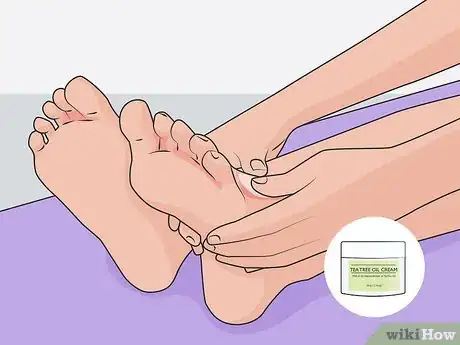


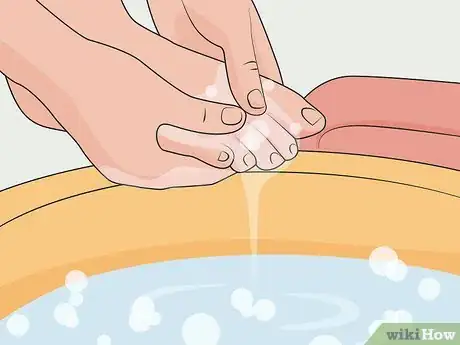



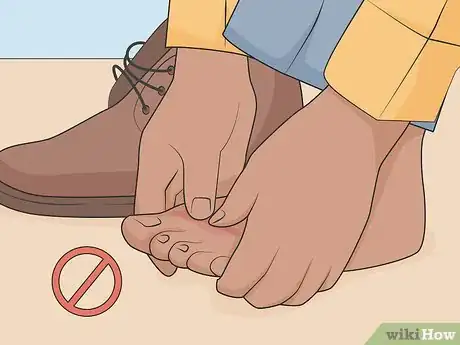


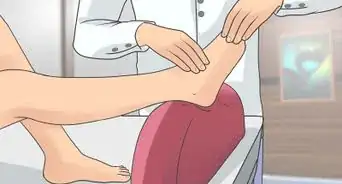
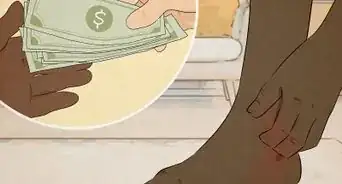

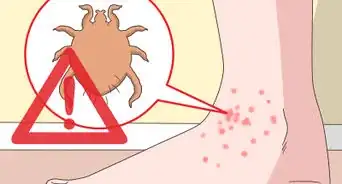



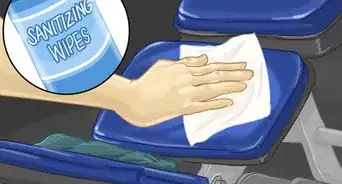




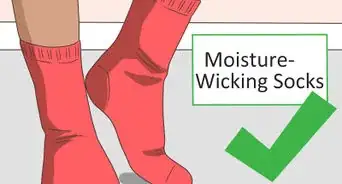
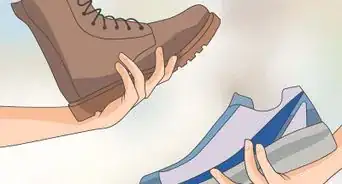








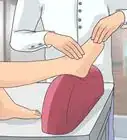






































Medical Disclaimer
The content of this article is not intended to be a substitute for professional medical advice, examination, diagnosis, or treatment. You should always contact your doctor or other qualified healthcare professional before starting, changing, or stopping any kind of health treatment.
Read More...